This week with the gorgeous Full Moon we’re focussing on root crops. Here’s a Before and After weeding my root crop bed.
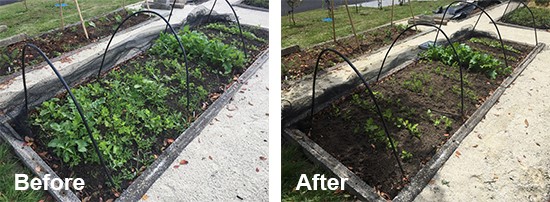
My all-time favourite weeding tool is the Niwashi. With its sharp edge and pointed end it can get all the weeds in tricky places out. You can also keep the Niwashi sharp by using a sharpening stone. Today was the perfect day to weed – after all that rain the soil was soft and the weeds easy to pull out completely.
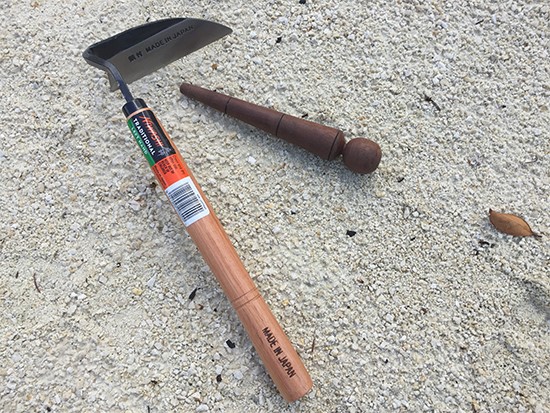
I did a small thin on the parsnips and radishes, but really they were pretty good.
Beetroot can be transplanted and I decided rather than thin these guys out, I would dig them up and with my trusty dibber, transplant them ALL! I put a few on the other side of the radishes, because they will be up and out quite soon. The beetroot are quite closely planted, but we can start eating them when they’re only medium-sized. Beetroot are good hardy seedlings with strong roots and can stand transplanting. Always hold the seedlings by the leaves.
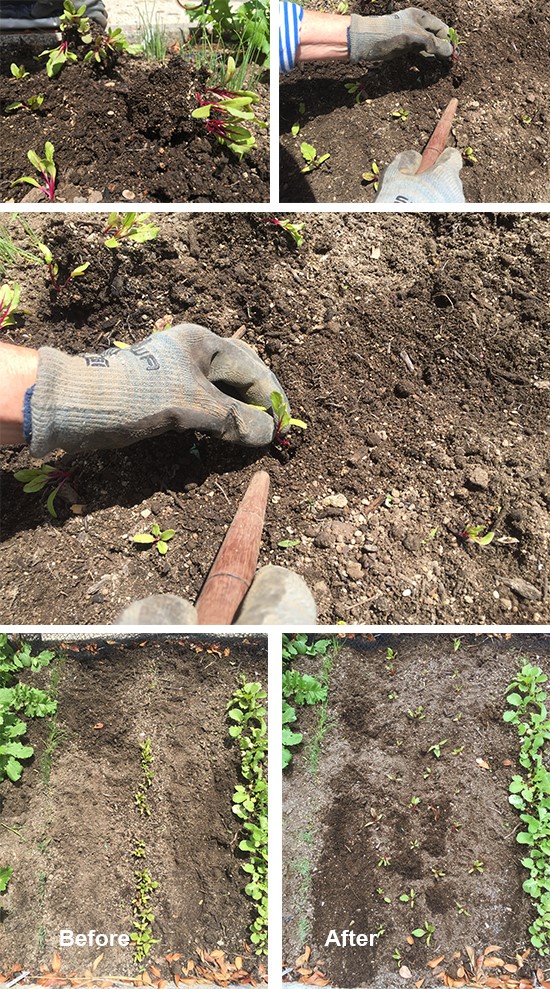
The carrots that have germinated are good, but they are a bit patchy. I had bought another packet of seed – this time Manchester Table, a variety Rob recommended. And I’ve sown them in between the other rows. This time only 3 rows, so they’re sown much thicker.
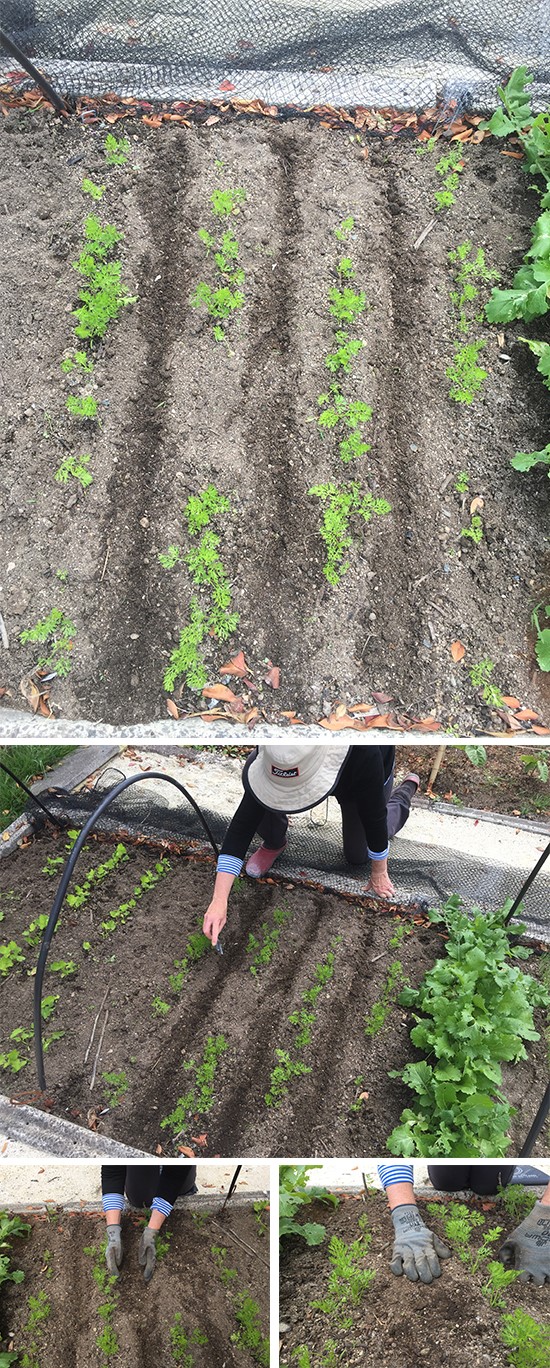
Turnips and radishes are growing nicely.
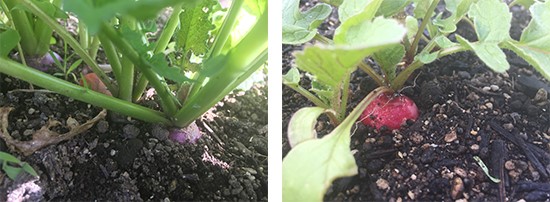
And in this Full Moon phase, the kumara are now sprouting.
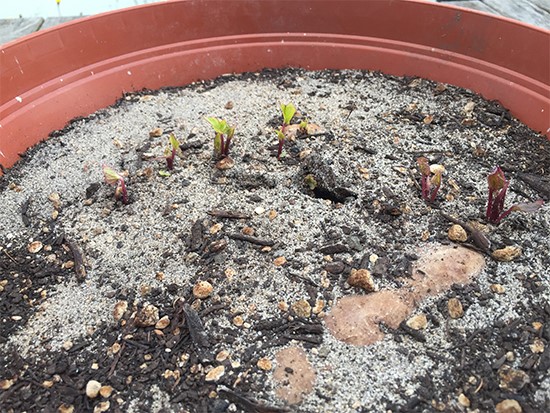
Delateralling tomatoes
Then it was time to delateral and tie up my tomatoes. They are growing like crazy and blowing about in the wind. The leaders are nice and strong now, so it’s a good time to do this job.
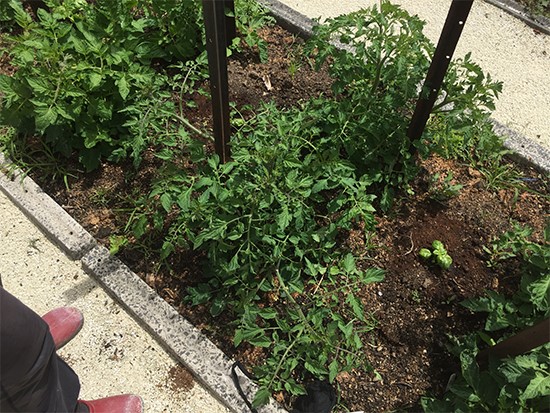
When delateralling…
• the first thing to do is to identify two strong leaders (I did three on some of my ‘Roma’ tomatoes because they bush up much more).
• Starting at the base of the plant, remove the lower limbs and any growing downwards – do this by snapping them gently in an up and down movement. Make the lower part of the plant quite clear so that air circulates well through the plant (to reduce the possibility of infection).
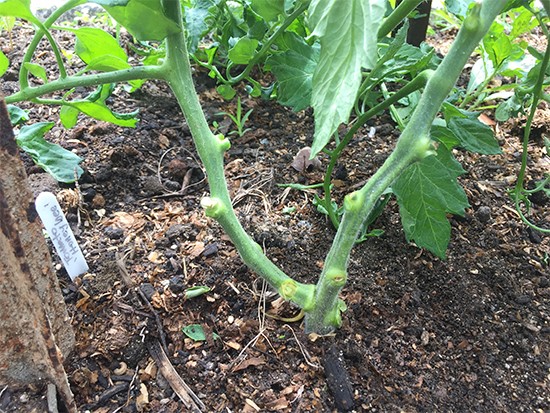
• Then for the upper part of the plant, just make sure all the little laterals are nipped or snapped out.
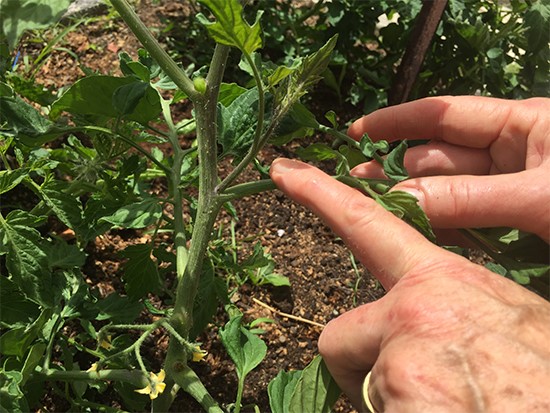
• We suggest applying Flowers of Sulphur with a paintbrush (an artist’s one is good) on the wounds you’ve made on the plant. This helps to seal them and again reduce the possibility of infection. Also delateral on a day with blue skies and a good breeze for the same reason.
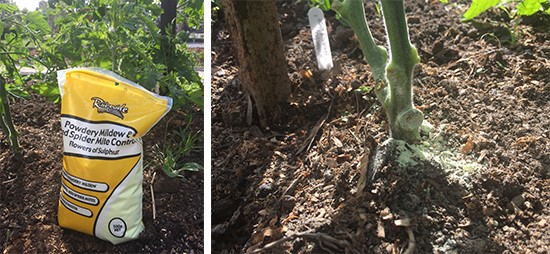
Finally we tie the leaders up to our stakes using a nice soft ribbon tie. Be careful where you put the laterals you’ve taken off your tomato plants as they can grow into new tomato plants quite easily. I’ve just left mine in a container till they die off.
Check out this video of Rob delateralling tomatoes.
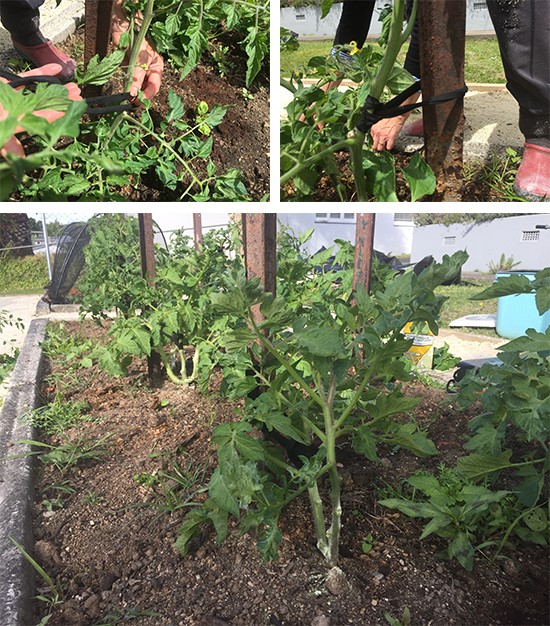
Just need to weed this bed now!
Hilling up potatoes
And finally a bit more barley straw on the potatoes. The previous straw had compacted and started to break down, and the potatoes were towering above it again.
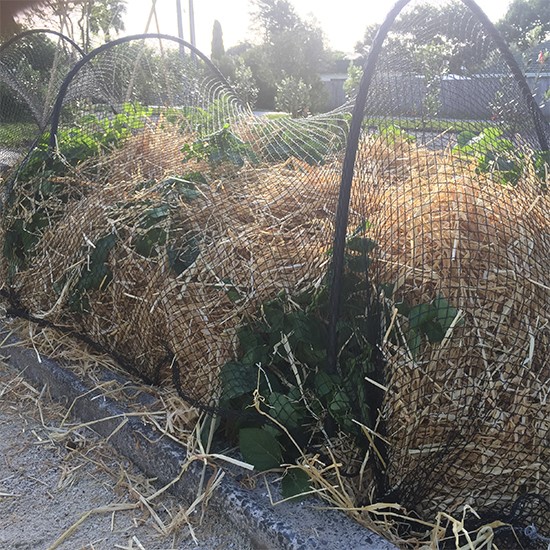
Have a brilliant week in the garden!
From Jan, Rob and the Team at OEG!
Website designed by www.thecornerstorecollective.com
Developed by Richard Hpa
4 Responses
Great to see progress in your garden. Re: your comment on tomato laterals. Removed laterals can be potted as a free way to increase plant numbers if you have room.
Yes, it’s coming on well, the garden, and so much fun to be in! Loving it 🙂 Agree that the laterals make more tomato plants quickly and cheaply. Thanks for that 🙂
Hi,
I’ve always grown one leader on my tomato plants. I’m interested that you allow 2 leaders. Can you please explain why you grow 2 leaders. Thanks.
Kind regards,
Christine
Hi Christine One leader means the plant grows taller, but we find that two leaders gives you the opportunity for a bit more fruit, even if it is a shorter plant. But, it’s just a matter of what you prefer – no scientific reason why we do two 🙂